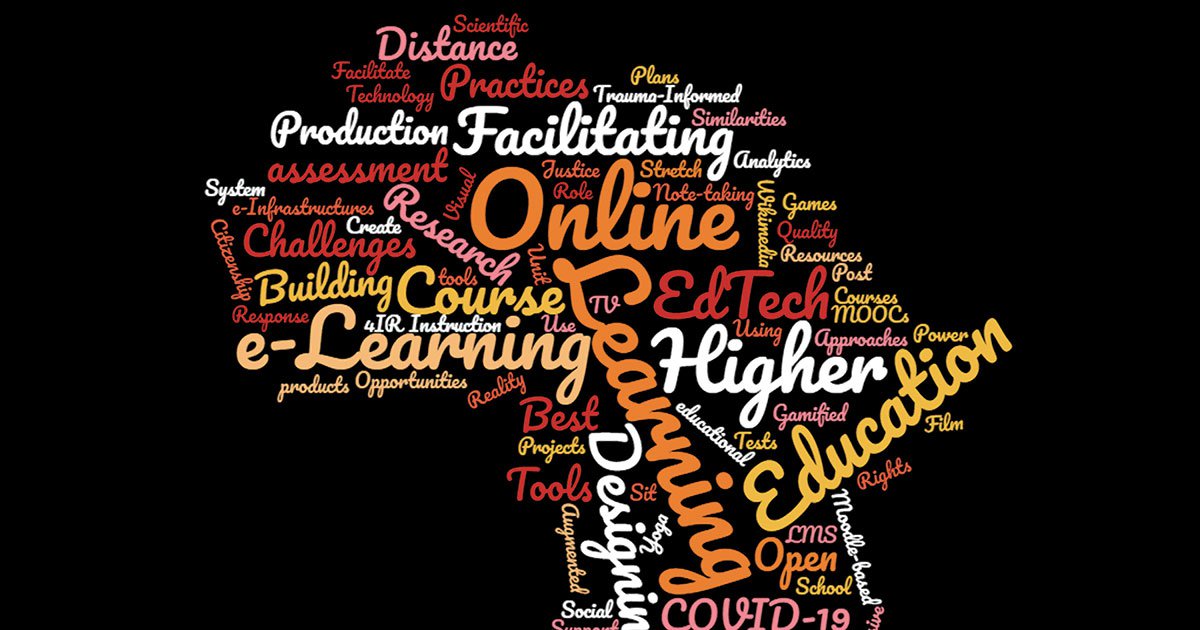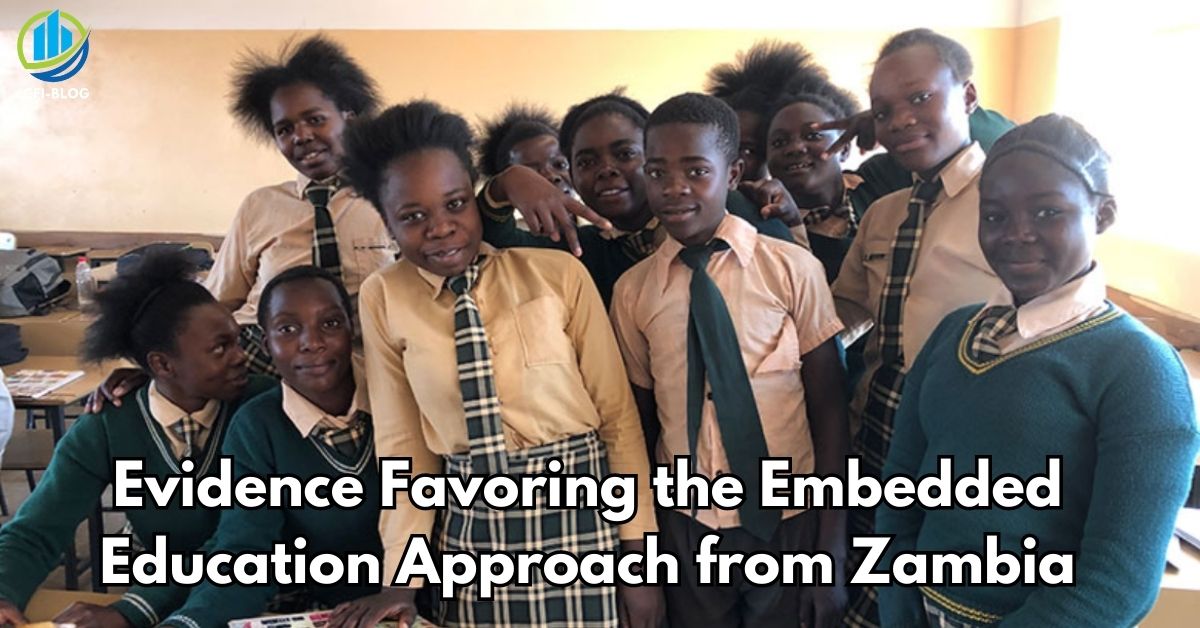With the increase in online education, financial education is also adopting online education methods. Before, MFOs present in Countries would follow the classroom model, which was very expensive. So the MFOs present in Zambia followed the embedded education model. In terms of the embedded education model MFOs would integrate educational content into key contact points for the local public to access.
We all know financial education is very important for an individual to have a stable life. Financial education means the cognitive knowledge of spending, investing, and saving money. So financial education is very necessary for the rural population of any country, as most of the population remains unbanked; they follow informal ways to store their money.
They don’t use formal banks and use its feature to save money and earn interest on them. Well, here in this article, we have mentioned how financial education helps individuals grow and how embedded education has helped scale up financial education in Zambia.
What is Embedded Education?
With the increase in digitization, online learning has also increased. Instructions can be delivered to consumers while they are using the product in real time. Business owners can write instructions in blogs or web pages for consumers to check and use them. However, the consumer should always search for the blog and then take time to read every instruction written on it. This is a bit time-consuming, and if the consumer doesn’t read the blog, they may miss important details about the respective product.

Financial inclusion in India is also gone through a set of challenges that can be seen in comments on the mor committee report. That is where embedded learning becomes helpful. You can integrate key information related to the product in the product itself, so when a consumer is using it, they can access the information at that time.
The information gets embedded in key contact points or teachable moments in the product where the user will access the product. This information gets integrated into the user’s day-to-day life, so it gets very easy for the user to access it. The education process becomes more convenient and interactive for the user. It gives clear instructions about the service of the product that they are going to use.
The service provider can customize this information based on the user, making the information even more personalized. The benefits are huge when it comes to embedded education. This can be used in MFOs (Micro financial Organizations) as their motive is not only to provide financial help but to give financial education to low-income individuals. Financial education also helps the unbanked population get banked. This can be seen in Drc where the MFOs present there were tapping into the potential of unbanked in Drc.
Financial education can be embedded in contact points for users to access while they apply for loans or seek financial counsel. This is a lot more cost-friendly; previously MFOs would give financial education lessons in classes, where users would seek counsel about financial behavior, such as how to save money, how to invest money, etc.
Now, this model couldn’t scale up, as education was given free of cost. The logistic charge for MFOs would rise due to this Classroom model; people attending the class would only get the education. Then they came up with an Embedded Financial education model where they integrated all the financial education content in key Contact points for the users to access whenever they use their services.
This reduced the cost significantly, and financial education would reach a lot of people following this model. For example, Hubspot users get access to instructions related to setting up a campaign without leaving their webpage. Another one, Instacart drivers can access the location of where they are going to deliver on their mobile app only. These are some examples of how the Embedded education model makes business or the process more efficient.
What Are Its Benefits?

There are multiple benefits of Embedded Education in comparison to the traditional way of learning. Some of the major advantages have been listed below:
1. Convenient
It is way more convenient than traditional learning; Nowadays, people do not have the patience to read instructions presented somewhere separately. It is time-consuming, and as a service provider, it will not do justice to the consumer if they don’t get the full information regarding the product.
The service provider should include all the key information about the product in the product itself so that the user can access all the information whenever they need it. By doing this, the users feel more attached to the service, increasing the retention of the service by consumers. The information can be customized according to individual consumers.
2. Digital Overload
It reduces the effort made by the user to access any kind of information. If the information is stored and written somewhere else, the user should search various sites to look at that information which will be less convenient for the user. The user will feel less connected if the information is not easily available. That is why embedded education is important for service providers as they can put in the information at the contact points, which the user can easily access, making him feel more connected to the product.
3. Relevance
Now even if the content is easily accessible, it does not make any sense if the content is not categorized. A user may land on the page and then leave if he does not see the relevant information. So with embedded education, key information can be placed in an organized manner so that the user will find it easily. Then they can access the required information which they require. This will allow users to not give much effort in finding the information and separating out which he needs and which he doesn’t.
4. Efficiency
Now, this is going to attract many business owners because embedded education is more efficient in delivering a key piece of information to the user. This allows a lot of users to use the product as the information is given to them easily. This is also cost-efficient; if you have to educate some users about your product, delivering the information physically will cost a lot of money. It is less practical. Also, there might be many logistical challenges to it. However, in the case of embedded education, the service provider can just update information virtually, allowing every user to access it and gain knowledge. In case of any update, you can do this as well, rather than re-training existing users of the update.
5. Onboarding
With the help of embedded education, users can access the information at their own pace. In the case of new users, it becomes tough for them to know about a product and its service, everything all at once, for them to access information at their time suits the best. Embedded education allows users to access information about the service only if they are using it and when they want to know about it. It increases user interactiveness about the product, and customer retention also increases.
Advantages of Financial Education
Financial education plays a crucial part in your life when you are facing any kind of financial roadblock. Financial education means a basic understanding of money, how to save it, how to invest it, etc. Financial education helps you get out of debt traps. We have listed down some of the advantages of financial education in real life:
1. Budgeting
Budgeting has four main components: saving, investing, and giving away. One must perfectly balance all these components to save money and grow financially. An ideal budget clears existing debt and sustainably saves money. Budgeting plays a crucial role in keeping an individual financially secure.
2. Investing
One must know about investing to earn money on your savings. You must know about diversification, interest rates, indexes, and Risk mitigations. You have to be active and have information to invest in profitable portfolios to earn money. Investing money is a skill that needs to learn by every individual, as saving money will not yield money. You need to invest in it to increase your income.
3. Borrowing
Borrowing money is essential for someone to grow. To start a new business or purchase a product, etc. We all need to borrow money at some point in our life. You should have a basic understanding of loan periods, interest rates, compound interests, etc. If someone has an understanding of all these things, then that person might not get into a debt trap. Financial education helps deal with loan management, resulting in less financial stress.
4. Taxation
One must have clear information about the Taxing system. Every source of income, such as income, inheritance, rent, etc., has a different taxation system. You must be clear about this to pay taxes on time and avoid any kind of penalty. Having the right knowledge will help you smartly categorize your earnings and investments so that you can save a lot of money in taxes. So, financial education is really helpful.
5. Personal Financial Management
Personal Financial Management is one of the most crucial criteria for any single person. It is a mix of everything listed above; an individual should know everything to manage his credit. If all the things are followed properly, then that individual will be financially secure and will have less stress. They can save money and earn money on savings by investing that money regularly. Financial education should be the top priority for anyone handling credit; just by earning money, you will not be financially stable, and you will require proper planning on how to save, spend and invest money.
Embedded Financial Education In Zambia
Embedded financial education was initiated in Zambia by MFOs present there. They partnered with Vision Fund and Zoona. Zoona was an e-payment platform, whereas Vision Funds would give away Microfinancial Loans. Vision funds would help consumers get microfinance loans. They used to support the global appeal for responsible microfinance.
This partnership aimed to educate the local Zambian population about e-payments; the existing customers of Vission funds (VF) didn’t know about the advantages of e-payments. That is where financial education was needed; MFOs present over there thought to implement financial education for the locals; they went with the classroom model at the beginning, which turned out to be very expensive. Many locals would not even get access to the information as classrooms were far away from where they lived.
MFOs then came up with the idea of embedded education; this was needed to scale up the financial education in that area. In the beginning, MFOs pointed out every key contact point present in the system where the consumers could access financial content. MFOs made financial content of around 8 to 20 mins that the officers present at VF could deliver to the consumers who came to apply for loans.
The content contained step-by-step instructions on how to use the Zoona payments app, why e-payments are the future, how it is safe etc. Some of the agents would hang engaging posters behind their desks for the consumers to read. VF would conduct monthly meetings where workbooks would be handed out to consumers, containing financial and educational content.
They would even give out tools, which made the consumers feel connected to the system. The tools contained some content that informed them about e-payments, how to use them etc. So, this is how MFOs followed the embedded education model in Zambia, and they integrated financial, and educational content into the existing system for the consumers to absorb.
After Effects of Financial Education in Zambia
After the successful operation of spreading Financial Education In Zambia, there was a significant development in local people while making any kind of financial decision. Several studies were conducted around the after-effects of the financial education drive that too was conducted in Zambia. Some of the interviewees included customers of banks, bank managers, and bank staff. Some of the testimonials include:
A customer of the Bank in Chipata
She said, “Before the training, I used to use money from my savings to function my business; I used to order materials from my savings. However, after training, I have understood that you should not spend money on your savings. I now order products from the profits of my business and the rest of the money I invest in my business. My business has grown from before, and I am pretty confident about running my Business now”.
A bank staff from some bank in Lusaka
He said, “I have witnessed a lot of the customers in this bank who doesn’t understand how much loan to take and how to repay them. They have found the right understanding of financial management now. They are now getting to know the what are the benefits of saving money in a bank rather than saving it in their homes. A lot of people are paying back their loan on time”.
The managers and the staff of the banks in Zambia have witnessed two things that have changed after the financial education training by the MFOs.
- Most of the customers would borrow Manageble Sums of Money.
- The loan taken by the customers would be repaid on time.
For further study of the after-effect, there was a study conducted with two different kinds of groups: one that did not receive financial education and one that did. The study looked at the financial pattern of both groups. The group that received financial education borrowed loans 12 percent more than the group of people that did not receive financial education.
This just shows how the embedded education model scales up financial education in a country. It sets benchmarking progress toward financial inclusion. We have seen this in the case of Zambia, where with the help of embedded education, Mass local people received their financial behavior changed. MFOs just don’t provide financial assistance. They also give business insights and training for growing your business. Many small-scale businesses have grown their businesses by applying this knowledge in their business. Many customers of the bank are taking loans that they can repay, and they are paying back the loan on time as well.
Frequently Asked Questions (FAQs)
Q1. Why is embedded learning important?
Embedded learning is important for scaling up the education of any sort. Without embedded learning, the education process becomes a lot slower and more costly. In the embedded learning approach, educational content is integrated into key contact points for the user to access.
Q2. What is embedded education?
Embedded learning is about integrating educational content into key contact points for the user to access. Embedded education allows users to access information in their day-to-day life. It becomes convenient, and you can access only the relevant information you need for yourself.
Q3. What are the sources of financing for education in Zambia?
There are multiple sources of financial education, such as financial institutions, MFOs, Private firms, etc. The government also helped to finance financial education in Zambia; some Non-governmental sectors even helped with financial education.
Bottom Line
Financial education is very important for an individual nowadays. If you carry credit with you, you need to have a basic understanding of saving, spending, and investing. However, financial education spread through the classroom model cannot be practical as it costs a lot of money to practice it. People do not have enough time to go through written blogs or documents to receive financial education.
That is why embedded education is the right approach; a service provider can integrate financial content into key contact points for any user to access it. With embedded education, a user should not wander the internet for information; he can get it within the process.
This approach was taken by the MFOs present in Zambia for scaling financial education. The operation was done by partnering up with Vision Funds and the Zoona payment app. The operation was successful. The people there have undergone significant changes after the financial education training.
Author Profile

- Jonas Taylor is a financial expert and experienced writer with a focus on finance news, accounting software, and related topics. He has a talent for explaining complex financial concepts in an accessible way and has published high-quality content in various publications. He is dedicated to delivering valuable information to readers, staying up-to-date with financial news and trends, and sharing his expertise with others.
Latest entries
 BlogOctober 30, 2023Exposing the Money Myth: Financing Real Estate Deals
BlogOctober 30, 2023Exposing the Money Myth: Financing Real Estate Deals BlogOctober 30, 2023Real Estate Success: Motivation
BlogOctober 30, 2023Real Estate Success: Motivation BlogOctober 28, 2023The Santa Claus Rally
BlogOctober 28, 2023The Santa Claus Rally BlogOctober 28, 2023Build Your Team – the Importance of Networking for Traders
BlogOctober 28, 2023Build Your Team – the Importance of Networking for Traders

